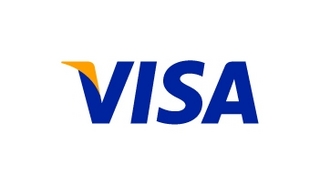Estonian officials announced plans last week to move the nation to electronic voting in time for the country's 2003 general election.
Published:
5 April 2001 y., Thursday
The shift is expected to boost voter participation among the young in a country that has voraciously adopted internet technology and mobile communications.
Despite a per capita GDP of only $3,778, between 21% and 40% of the population is online. Half of all secondary schools in the country are now wired to the internet. 95% of Estonian public employees have a computerized workplace. At home, 19% of the population owns a computer, with approximately 53% of them internet-connected.
As is true throughout emerging internet markets, the internet is used heavily by young Estonians. According to surveys by BMF Gallup Media, more than half of teens in the country (15 to 19 years old) surf the web. For most Estonians, work is the primary place of access: 74% of the population reports using the internet during the workday, and only 9% report use it during the weekend.
Estonian governmental policies have stimulated internet adoption and the diffusion of information technology throughout the country. In February 2000, the Estonian parliament approved a proposal to guarantee internet access as a nationwide constitutional right. The government has also established free internet access centers (located along the country's major highways) to ensure equitable access to the technology. It has also initiated the innovative "Tiger Leap" program which ensures that every Estonian school is wired to the Internet.
Virtually the entire country has mobile phone coverage, with three operators providing GSM services. Today about 29 percent of the population uses GSM services. Estonian mobile operators have been among the first in the world to introduce WAP services to their customers.
The country has a high mobile phone penetration rate for the Baltic region. According to Estonian Telecom, 36.8% of the population subscribes to mobile phone service, a substantial increase from 24.9% in 1999. As handsets that allow internet connections are purchased by Estonians, the number of people accessing the internet through their mobile phone will soar.
Šaltinis:
emarketer.com
Copying, publishing, announcing any information from the News.lt portal without written permission of News.lt editorial office is prohibited.
The most popular articles
Software company announced new structure_ of it_s business.
more »
 Wincor Nixdorf is enhancing its consulting portfolio for the banking business.
more »
Wincor Nixdorf is enhancing its consulting portfolio for the banking business.
more »
 Wincor Nixdorf is set to present its ProClassic Enterprise Cash Management software for effective and rational organization of end-to end cash management processes in banks at the Retail Delivery Show.
more »
Wincor Nixdorf is set to present its ProClassic Enterprise Cash Management software for effective and rational organization of end-to end cash management processes in banks at the Retail Delivery Show.
more »
 Yahoo said Jerry Yang will step down as chief executive as soon as the board finds a replacement.
more »
Yahoo said Jerry Yang will step down as chief executive as soon as the board finds a replacement.
more »
 Wincor Nixdorf AG has turned in the best year in its history.
more »
Wincor Nixdorf AG has turned in the best year in its history.
more »
 Visa Inc. is working with the Los Angeles transit authority to allow train, subway and bus riders to pay fares with Visa’s payWave-enabled contactless cards.
more »
Visa Inc. is working with the Los Angeles transit authority to allow train, subway and bus riders to pay fares with Visa’s payWave-enabled contactless cards.
more »
 Customers line up in New York City to be the first to buy Google's new G1 phone.
more »
Customers line up in New York City to be the first to buy Google's new G1 phone.
more »
 Children and teenagers are keen internet users - 12 to 15-year-olds spend at least three hours a day on screen - but are not always aware of the dangers: not just sites showing child pornography or violence but also the risk of bullying or grooming.
more »
Children and teenagers are keen internet users - 12 to 15-year-olds spend at least three hours a day on screen - but are not always aware of the dangers: not just sites showing child pornography or violence but also the risk of bullying or grooming.
more »
 A European Commission study found that devices left on stand-by throughout the European Union in 2005 consumed the same amount of electrical energy as a country the size of Greece or Portugal in 2008.
more »
A European Commission study found that devices left on stand-by throughout the European Union in 2005 consumed the same amount of electrical energy as a country the size of Greece or Portugal in 2008.
more »
 The European Commission has launched a new web portal called “Study in Europe” to promote the attractiveness of European Higher Education to students from other parts of the world.
more »
The European Commission has launched a new web portal called “Study in Europe” to promote the attractiveness of European Higher Education to students from other parts of the world.
more »
 With the increasing availability of the internet, children are being exposed more and more to illicit images and content.
more »
With the increasing availability of the internet, children are being exposed more and more to illicit images and content.
more »